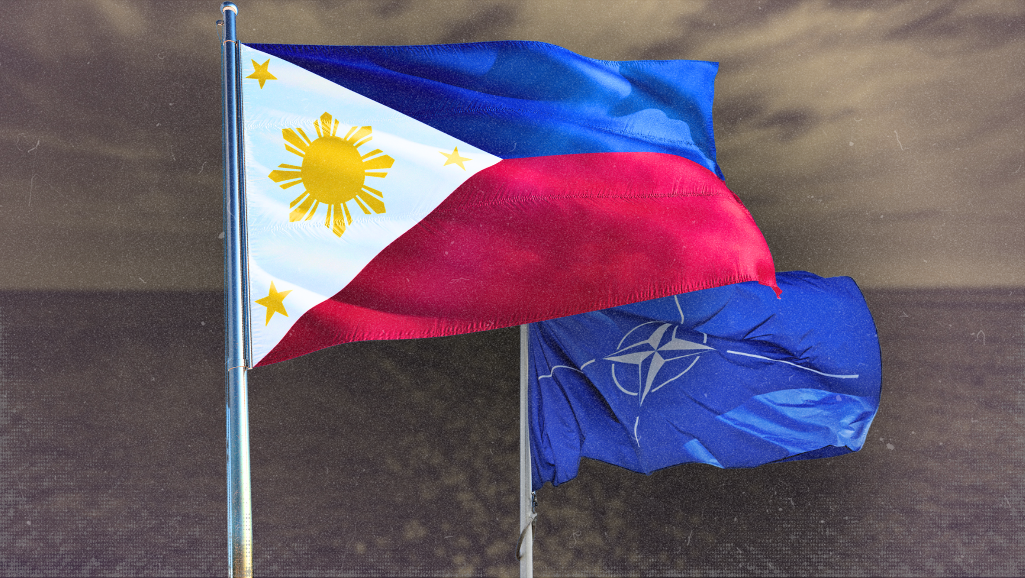
The Euro-Atlantic military alliance, the North Atlantic Treaty Organization (NATO), has started to flex its muscles, attempting to extend its reach halfway around the globe in the Indo-Pacific region.
Individual NATO members – the United States, Canada, United Kingdom, France, and Germany – have been engaging with Indo-Pacific countries, particularly Australia, Japan, New Zealand, and South Korea.
The four Indo-Pacific states, AP4, have been invited to attend the NATO annual summit twice in Madrid and Vilnius in the last two years.
This indicates the growing Euro-Atlantic alliance’s interest in the fastest-growing yet volatile region.
Militarily, British, Canadian, French, and German warships have started to patrol the East and South China Sea, making port calls in Japan and several Southeast Asian countries, including the Philippines.
A French frigate had participated in five-day naval drills during the early phase of joint and combined “Balikatan” exercises last month outside territorial waters in the West Philippine Sea.
In its 2022 paper, NATO identified China as a competitor and condemned its coercive activities in the South China Sea, a reason why the bloc was interested in the region.
NATO has strengthened and expanded its engagements with the Association of Southeast Asian Nations (ASEAN), through the ASEAN Regional Forum (ARF) and the ASEAN Defense Ministers Meeting-Plus (ADMM-Plus) – two of the region’s security-related mechanisms.
NATO has been shifting from its anti-Soviet focus into a global hybrid power structure to support the US moves to polarize the world into Western democracies and authoritarian regimes.
NATO was formed during the Cold War to guard against the former Soviet Union’s expansion in Europe.
It relied on the US security umbrella, but the Ukraine war awakened Europe to prepare for a resurgent Russia, asking its 31 members to increase defense spending to at least 2 percent of their GDP.
For instance, Canada has been spending billions on defense but it could not keep its NATO commitments.
The US and NATO in a way, wanted smaller and weaker states to line up behind them and become more dependent on the Western military alliance against what it called hostile actions by China, Iran, North Korea, and Russia.
However, NATO’s interest is much more than that of Chinese activities. It wanted the AP4 to contribute heavily in supporting Ukraine against Russia.
It wanted material and financial support to sustain the Ukraine war as there were delays in the weapons delivery from the United States and other NATO members.
NATO also looked at the Philippines and Singapore as potential partners among the Association of Southeast Asian Nations.
Singapore has politically supported the US and NATO’s pro-Ukraine position, while the Philippines’ security problem with China is a potential entry point for future cooperation and engagement.
There were reports some Philippine private businesses have been supplying generator sets to Ukraine, through a German company.
These are smaller steps. But, NATO’s engagement would expand as the US-led military alliance steps up its activities to counter what it called an authoritarian regime of China, Iran, North Korea, and Russia.
From the ASEAN standpoint, this could be a dangerous sign of intense polarization that may affect the bloc’s centrality and cohesion as member-states choose between the West and its adversaries, particularly China.
It could create instability in the region, with a former Australian prime minister criticizing NATO’s expansion to the Indo-Pacific region and the French president opposing the opening of a NATO liaison office in Tokyo.
NATO’s entry into the Indo-Pacific region could undermine the regional security structure, which ASEAN holds sacred.
Under ARF and ADMM, ASEAN wanted to be in the driver’s seat to control what direction it wanted to take, resisting the US and China’s efforts to take any side.
However, the US and NATO might use China’s threat to balance the regional powers, warning of Beijing’s creeping influence.
China is truly a security concern, but ASEAN should be left alone in navigating its relations with two outside powers – China and the US.
Expanding NATO’s engagements in the Indo-Pacific region is not just helping the US to usurp ASEAN’s right to define regional security and military policies.
It could also start a dangerous arms race as both sides would strengthen their military capabilities to deter conflict.
However, the intense polarization in the region increases the danger of a real conflict.
ASEAN should remain non-aligned, resisting the US and China to pull them to their side.
As a member of ASEAN, the Philippines should avoid rushing into a decision to support NATO’s entry into the region and join other Southeast Asian nations’ ambivalence over the emerging alliance of Australia, the United Kingdom, and the United States.
Instead of supporting a Western-centric military alliance, the Philippines can help ease tensions by participating in dialogue with its neighbors and resisting joining any military alliance imposed by the US and its allies.
The Philippines already has the Mutual Defense Treaty (MDT) with the United States.
Adding more Western allies, like NATO, would likely increase tensions, making the Philippines more dependent on its external defense.
The Philippines should learn its lessons from other ASEAN states. It should have a more independent foreign policy and be less dependent on the West. It is unclear if the US and NATO would be there if conflict erupts.

0 Comments